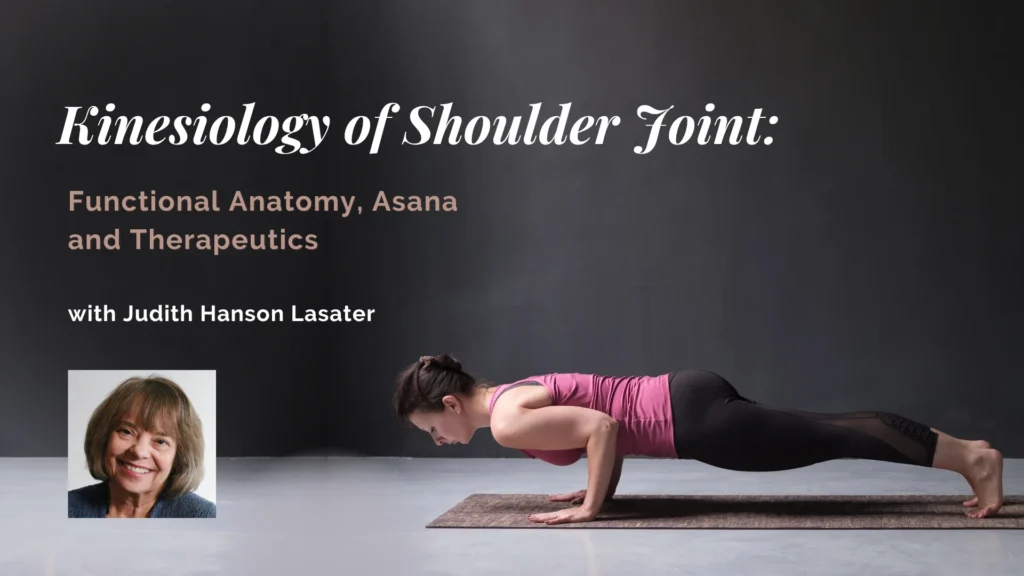The shoulder is an important joint in the body as well as an important symbol of our strength and ability to succeed in the world. The position of our shoulders instantly telegraphs our mood to the world.
Because of the importance of this area in the body, many yoga poses focus either on strengthening or stretching the shoulders. However, without proper knowledge of the biomechanics and functional anatomy of the shoulder joint, progress can be slow, and students can be at risk for shoulder injuries, if not practicing with proper alignment.
In addition, some students come to yoga classes with preexisting dysfunction of their “rotator cuff” muscles, and yoga teachers are increasingly called upon to work with students, who have limited range of motion of the shoulder joint or even rotator cuff issues.
For these reasons, it’s imperative for yoga teachers and students to understand the biomechanics and functional anatomy of the shoulder joint, and the surrounding joints that move in conjunction with it. The movements of a healthy shoulder joint using the rotator cuff muscles is often misunderstood as involving ONLY the glen-humeral joints (shoulder joint proper). Actually, to understand shoulder movement in asana, one needs to understand the movements of the scapula, clavicle and thoracic spine.
In this online yoga course, Judith Hanson Lasater continues her series on the kinesiology of yoga, and reviews the functional anatomy of the extended shoulder joint as it applies to yoga practice
What You Will Learn
- Basic anatomy of the extended shoulder joint
- Key kinesiological basics regarding the movement of this complex joint
- Principles of safe practice for shoulder opening and strengthening yoga postures
- Key alignment principles to ensure a safe practice
- Do’s and don’ts for students with preexisting shoulder injuries or rotator cuff issues
This Course Also Includes:
- Bonus recording! Salamba Sirsasana – Headstand: Benefits, Practice, and Teaching Tips: Headstand is considered the King of yoga asanas. In this audio yoga download, Judith Hanson Lasater talks about the benefits, anatomy, preparation and precautions of this important yoga pose. She discusses the benefits of yoga inversions, the preparation recommendations for Sirsasana and how to practice and teach this well-known pose?
- Recordings of Both Sessions: Yours to keep. It’s generally acknowledged that many people only retain 10-20 percent of what they learn in a workshop. You will get the recordings of both sessions (MP3 & MP4), enabling you to go back and listen to the workshop as many times as you like.
- Transcripts of Both Sessions: Ever wanted to refer to a certain part of a course? Even the best note takers miss a point every so often. With the transcripts of the sessions, you can go back and refer to particularly important passages or clarify sections you were in doubt about.
This course qualifies for 2 CEs with Yoga Alliance.



